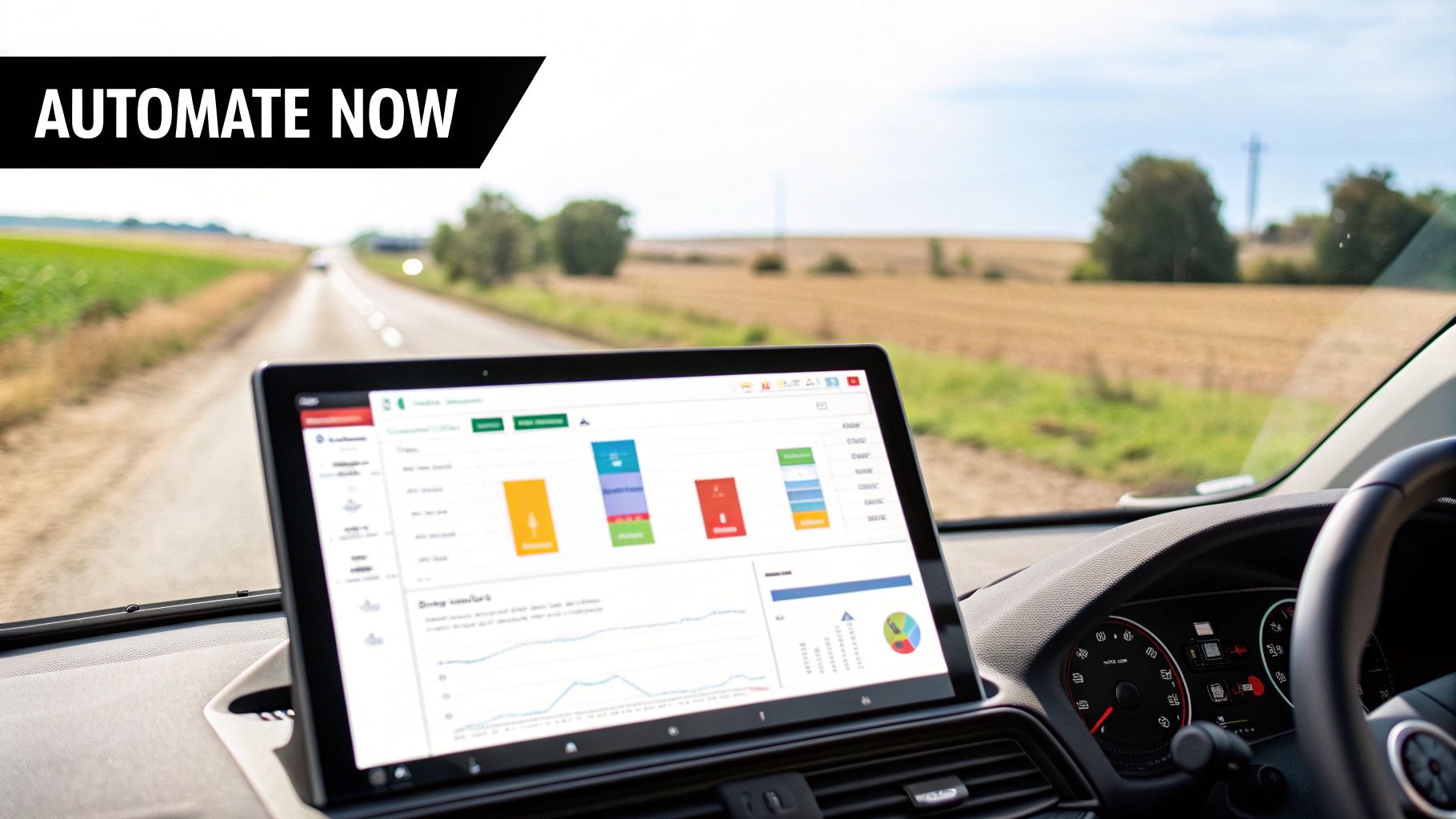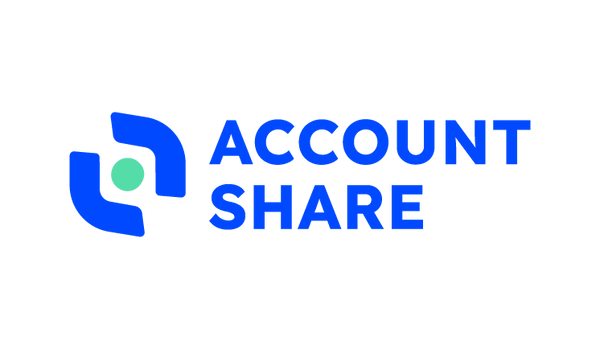
Enterprise License Optimization: Cut Costs & Boost Compliance
Share
The Hidden Financial Drain of Software Licensing

For many enterprises, software licensing costs represent a significant and often overlooked financial burden. Initially manageable, these expenses can quickly escalate, hindering growth and innovation. This is particularly true in sectors like finance and engineering, which rely heavily on specialized software. Often obscured by complex licensing agreements and poor usage visibility, this financial strain can severely impact profitability and competitiveness. So, where exactly is the money going?
One of the main culprits is underutilized software licenses. Organizations frequently purchase software licenses that employees rarely use, leading to substantial wasted resources. Studies indicate that up to 48% of software expenditures are lost due to this inefficiency. Redundant licenses, where multiple employees have access to software that could be shared, further compound the issue. These inefficiencies create a significant financial drain, impacting an organization's bottom line.
Enterprise license optimization is critical due to the substantial financial implications of software licensing. Annual license costs in industries like engineering can range from tens of thousands to millions of dollars. In some instances, up to 48% of this spending is wasted due to underutilized or redundant licenses. By implementing effective license management strategies, companies can dramatically reduce these costs.
For example, Mitta Oy and Burns & McDonnell have realized substantial savings through license optimization. Mitta Oy reduced its software licenses by up to 50%, while Burns & McDonnell lowered its software spending by 25%. These cases demonstrate the power of proactive license management in controlling costs and optimizing resource allocation. Learn more about license optimization: Reduce Recurrent Software Spend Through License Optimization.
To further illustrate the potential for savings, let's consider the following table:
Software License Waste by Industry
This table showcases the average percentage of software license waste across different industries, highlighting areas where optimization can yield significant impact.
| Industry | Average Annual Spend | Est. Percentage Wasted | Potential Annual Savings |
|---|---|---|---|
| Engineering | $1,000,000 | 48% | $480,000 |
| Finance | $500,000 | 35% | $175,000 |
| Healthcare | $750,000 | 40% | $300,000 |
| Manufacturing | $1,200,000 | 45% | $540,000 |
As the table reveals, substantial savings can be achieved across various industries by addressing software license waste. Implementing a robust enterprise license optimization strategy is not just a cost-saving measure, but a strategic move that can free up resources for critical investments.
Real-World Examples of License Waste
The repercussions of neglecting enterprise license optimization are real. Companies have discovered they were paying for licenses for employees who left years prior or renewing licenses for obsolete software. These situations underscore the critical need for proactive license management. You might also find this helpful: our blog sitemap.
The Importance of Proactive License Management
Ignoring software licensing inefficiencies can have significant consequences. Beyond the immediate financial impact, it can restrict investment in new technologies and create compliance risks, potentially resulting in hefty penalties during software audits. Implementing a robust enterprise license optimization strategy allows businesses to reclaim wasted resources, improve budget predictability, and ensure compliance, turning software licensing from a burden into a strategic advantage.
Navigating the Subscription Revolution

The software industry is experiencing a major shift. The old way of buying perpetual licenses is giving way to the new subscription-based model. This presents both obstacles and advantages for businesses. This “subscription revolution” demands a fundamental change in how organizations budget, predict future costs, and manage their software. A proactive and strategic approach to enterprise license optimization is essential for successfully navigating this change.
One key challenge is the fluctuating nature of subscription costs. Perpetual licenses are a one-time expense, but subscription fees recur, often monthly or annually. This makes budgeting and forecasting more difficult and requires new financial planning methods.
For example, businesses need to plan for potential price hikes and understand the cost implications of adding or removing users during the subscription period. This necessitates increased financial agility and more frequent adjustments to budgets.
Additionally, the transition to subscriptions creates new complexities in license management. Tracking usage, ensuring compliance, and optimizing license allocation become ongoing tasks. This calls for dedicated resources, sophisticated tools, and close cooperation between IT, finance, and other departments. New procedures are needed for user onboarding and offboarding, managing renewals, and negotiating contracts.
However, the subscription model also offers opportunities for flexibility and cost savings. Businesses can easily scale their software usage up or down as needed, eliminating large upfront investments required by perpetual licenses. This facilitates a more agile response to changing business needs and optimizes software spending.
Subscriptions often include access to the latest software updates and features. This ensures organizations always have the most current technology. The perpetual licensing model, once the industry standard, is being phased out by major vendors.
This transition underscores the increasing importance of continuous monitoring and optimization of software licenses to avoid unnecessary expenses. By diligently tracking usage and adjusting license allocations, businesses can align their software spend with actual needs, thereby improving budgeting and forecasting accuracy. This proactive approach is vital for maintaining cost efficiency and resource utilization. Explore this topic further.
Strategic Opportunities in the Subscription Landscape
Forward-thinking enterprises are using the subscription revolution to their benefit. They are implementing robust enterprise license optimization programs for real-time visibility into software usage. These programs automate license management tasks and provide data-driven insights for vendor negotiations.
This gives them control over costs, ensures compliance, and maximizes the return on their software investments. Platforms like AccountShare offer another way for businesses to optimize costs – through group purchasing of premium subscriptions. This further enhances their overall software strategy.
Building Your Enterprise License Optimization Engine

Moving beyond theory, let's explore practical strategies for enterprise license optimization in real-world businesses. This isn't a one-time project, but a continuous process. By examining successful optimization programs, we can identify the key technological, procedural, and organizational components that deliver real results. These elements work together, like a well-oiled engine, to drive ongoing value.
Essential Technological Components
Leading organizations use automated discovery tools like Flexera One to gain a complete understanding of their software landscape. These tools scan networks and systems to pinpoint all installed software, including specific versions and how they're being used. This eliminates guesswork and provides a clear picture of your software assets.
These tools can identify instances of over-licensing, where you're paying for more licenses than you need. They also highlight under-licensing, which presents significant compliance risks. This data is critical for making informed decisions about license allocation and renewals. Usage analytics offer further insights into software usage, revealing opportunities for optimization and cost savings.
Establishing Governance Frameworks
Effective enterprise license optimization requires more than just technology. It needs a robust governance structure. This ensures optimization efforts are sustainable and consistently provide value. A dedicated optimization team is often created to oversee the process, offering expert guidance and driving implementation.
A cross-functional license committee, including stakeholders from IT, finance, and legal, aligns license management with overall business objectives. This collaborative approach prevents silos and ensures everyone's perspective is considered. Executive sponsorship is also key, securing necessary resources and support for long-term success. This acts as a steering wheel, guiding the engine in the right direction.
Practical Approaches for Sustainable Optimization
Several practical steps can integrate optimization into daily operations. Standardizing software requests and implementing approval workflows prevents unnecessary purchases and maintains alignment with business needs. This streamlines the process and reduces the risk of duplicate licenses.
Reclamation processes are crucial for maximizing the value of existing licenses. When employees leave the company or no longer require certain software, licenses can be reclaimed and reassigned. This avoids waste and minimizes the need for new licenses. These procedures act as the fuel for the engine, keeping the optimization process running smoothly.
Think of enterprise license optimization as building a powerful machine. The technology provides the horsepower, the governance framework offers steering and control, and practical processes provide the fuel for continuous improvement. By combining these components, organizations can effectively manage their software licenses, control costs, and maintain compliance.
Turning Compliance From Liability Into a Strategic Asset

Software audits are often a source of anxiety for many organizations. However, with proactive enterprise license optimization, these audits can be transformed into opportunities. They become a chance to demonstrate responsible software management. This shift changes compliance from a reactive burden to a strategic advantage, bolstering both financial and operational resilience.
One key element of this transformation is early identification and mitigation of compliance vulnerabilities. This proactive approach prevents these issues from escalating into costly penalties. Leading organizations achieve this through continuous monitoring systems and regular internal license audits. This allows them to detect and rectify discrepancies, ensuring ongoing compliance and minimizing the risk of unexpected audit findings.
For example, even experienced IT teams can be caught unaware by the complexities of geographic usage restrictions and indirect access. Understanding these nuances and establishing clear usage policies is therefore critical for maintaining compliance.
Software license audits often reveal unexpected costs and compliance risks. Optimizing licenses not only reduces spending; it also proactively addresses potential compliance issues before they become major problems. Identifying instances of over-licensing and under-licensing, for instance, allows companies to take corrective action. Having detailed usage data also strengthens an organization’s position during vendor negotiations. It provides a strong foundation for discussing contract terms and future needs, ensuring that software licenses align with both current and projected business requirements. For a deeper dive into this topic, see: 5 Overlooked Benefits of Software License Optimization.
Practical Approaches to Compliance
Beyond simply identifying vulnerabilities, practical steps are essential for documenting compliance evidence. This includes maintaining comprehensive records of software licenses, usage data, and all compliance-related documentation. This documentation becomes invaluable during audits, offering clear proof of your organization’s commitment to compliance.
Robust monitoring systems provide continuous visibility into software usage patterns and license allocation. This not only helps maintain compliance over time, but also allows for proactive adjustments as business needs change.
Internal audits are a key part of this process. They offer a way to assess the effectiveness of existing license management practices. By simulating a vendor audit, internal audits can identify potential weaknesses and areas for improvement, preventing small problems from becoming large ones. For further reading, see: How to master enterprise software management.
Turning Compliance Into a Strategic Asset
Through enterprise license optimization, compliance shifts from a reactive burden into a strategic asset. This not only reduces costs and mitigates risks but also strengthens your organization's reputation and fosters trust with vendors.
This proactive approach demonstrates a commitment to responsible software management, enhancing your organization's standing within the industry. It builds stronger vendor relationships and facilitates more collaborative negotiations, which can lead to long-term cost savings and better alignment of software resources with business needs. By viewing compliance as a strategic initiative, organizations can unlock significant value and position themselves for long-term success.
From Concept to Reality: Implementing Your Optimization Program
Turning your vision for enterprise license optimization into a reality requires a structured, phased approach. This section presents a practical implementation roadmap, highlighting the crucial stages and key considerations for achieving success. This journey starts with evaluating your current situation and ends with the establishment of sustainable governance.
Conducting a Baseline Assessment
The first step is understanding where you stand. A baseline assessment involves a complete inventory of your current software licenses, usage trends, and spending. This assessment reveals immediate opportunities for savings, like reclaiming unused licenses or consolidating redundant subscriptions. It's similar to taking inventory before a trip. This assessment forms the basis for a targeted optimization plan.
Building In-House vs. Engaging Specialized Partners
Once you understand your needs, you can decide whether to build in-house optimization capabilities or work with external partners. Building an internal team may be feasible for organizations with less complex IT environments and sufficient internal resources. However, for organizations with complex environments or those lacking specialized expertise, partnering with a firm specializing in enterprise license optimization is often more effective. This decision depends on your organization's size, complexity, and specific goals. It's like choosing to build a house yourself or hiring a contractor – the decision hinges on your resources and the project's scope.
Overcoming Implementation Obstacles
Implementing an optimization program often presents challenges. Common obstacles include stakeholder resistance, data quality problems, and competing priorities. Addressing these proactively is essential. For instance, involving key stakeholders early can reduce resistance and ensure buy-in. Prioritizing data quality ensures accurate assessments and effective decisions. Executive sponsorship elevates the importance of license optimization and secures necessary resources.
Realistic Timelines and Resource Requirements
Successful implementation demands realistic timelines and resource allocation. The following table offers a general framework for a typical optimization program, outlining key activities, expected durations, and outcomes:
To understand the typical implementation process, let's look at the phases involved in an enterprise license optimization program.
| Phase | Key Activities | Typical Duration | Expected Outcomes |
|---|---|---|---|
| Assessment | Software inventory, usage analysis, cost review | 2-4 weeks | Baseline data, identification of quick wins |
| Planning | Develop optimization strategy, define KPIs | 4-6 weeks | Implementation plan, resource allocation |
| Implementation | Tool deployment, process changes, training | 6-8 weeks | Improved license management, cost reductions |
| Governance | Establish ongoing monitoring, reporting, and review | Ongoing | Continuous optimization, compliance assurance |
This timeline serves as a benchmark. The actual duration of each phase will vary depending on the organization's size and complexity. For example, larger organizations with more complex software portfolios may require longer assessment and implementation phases.
Measuring Success and Continuous Improvement
Setting clear performance benchmarks and metrics is crucial for measuring your optimization program's effectiveness. Key metrics may include cost savings achieved, compliance improvements, and the number of reclaimed licenses. Regular monitoring and reporting are essential for pinpointing areas for improvement and ensuring the program's ongoing success. Like a well-maintained engine, continuous monitoring keeps your program running efficiently. This allows organizations to adapt and maximize their software investments. Consider exploring platforms like AccountShare for group purchasing of premium subscriptions to further optimize costs and refine your software strategy. This adds another level of efficiency to your overall enterprise license optimization efforts.
Mastering the Vendor Negotiation Chess Game
Negotiating software licenses for a large enterprise can often feel like a high-stakes chess match. Vendors frequently hold the initial advantage, dictating terms and potentially inflating costs. However, enterprise license optimization changes this dynamic, shifting the balance of power and creating a more equitable partnership. This empowers organizations to secure the best possible terms and maximize their software investment.
Data-Driven Insights: Your Secret Weapon
Imagine entering a negotiation fully equipped with detailed knowledge of your software usage, highlighting areas of overspending and potential redundancies. This is the power of data-driven insights. Enterprise license optimization provides this critical information, allowing you to negotiate from a position of strength. How to master enterprise software management provides additional insights. For example, data revealing underutilized licenses can be leveraged to negotiate a smaller quantity or a more cost-effective licensing model.
Strategic Timing and Competitive Alternatives
Timing is crucial in any negotiation. Strategically timing your software license negotiations can significantly impact your leverage. Negotiating renewals well in advance, for instance, allows ample time to explore competitive alternatives. This added time puts pressure on the vendor to offer more favorable terms.
Consolidating agreements across multiple vendors can also provide significant bargaining power. By bundling software purchases, organizations can negotiate better discounts and streamline vendor management, leading to greater efficiency.
Structuring Contracts for Flexibility
Negotiating favorable contract terms is essential for long-term success. This includes incorporating flexibility into the agreement to accommodate changing business needs. Exchange rights, for example, allow organizations to swap unused licenses for more appropriate options. Price protection clauses safeguard against unexpected price increases during the contract term.
Favorable termination terms provide a necessary exit strategy if the software no longer meets organizational requirements. These provisions offer built-in safeguards and ensure the organization maintains control over its software investments.
Assembling the Right Negotiation Team
Successful negotiations require a skilled team with a deep understanding of the organization’s software needs and the vendor's offerings. This team should include procurement specialists, technical experts, and legal counsel. Procurement specialists bring negotiation expertise to the table.
Technical experts contribute their understanding of the required functionality. Legal counsel ensures contracts are structured to protect the organization’s interests. Preparing a compelling data package showcasing usage patterns and highlighting potential cost savings is essential for influencing vendor negotiations. Researching vendor-specific leverage points can further strengthen your position and unlock significant savings without compromising critical functionality.
By understanding the vendor's priorities and potential challenges, you can tailor your negotiation strategy to achieve mutually beneficial outcomes. This collaborative approach can lead to significant cost savings and improved vendor relationships.
Ready to optimize your enterprise software licensing and unlock potential cost savings? Explore AccountShare today and discover how group purchasing can further reduce your software expenses.
